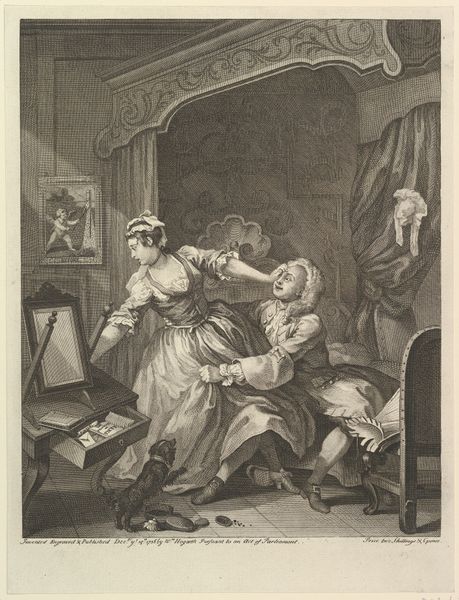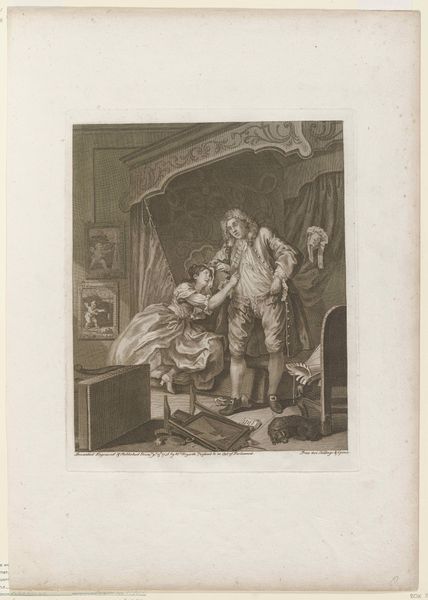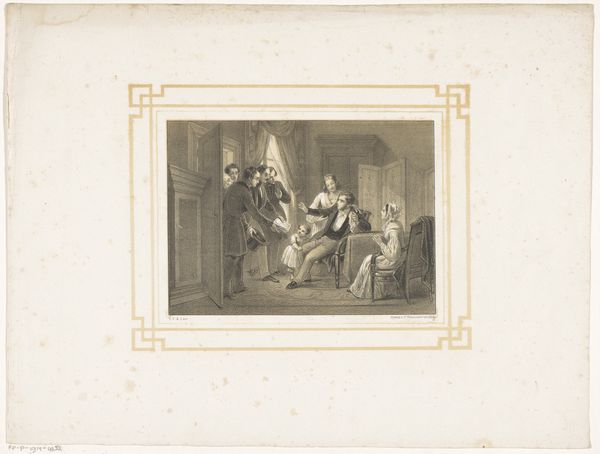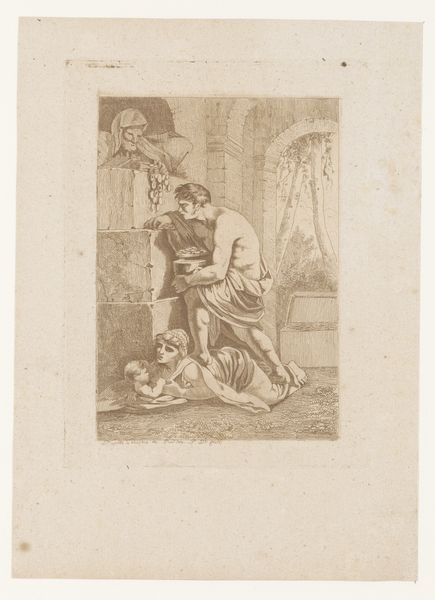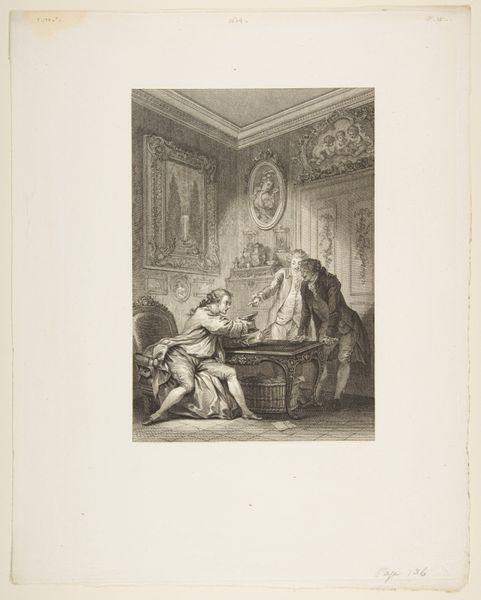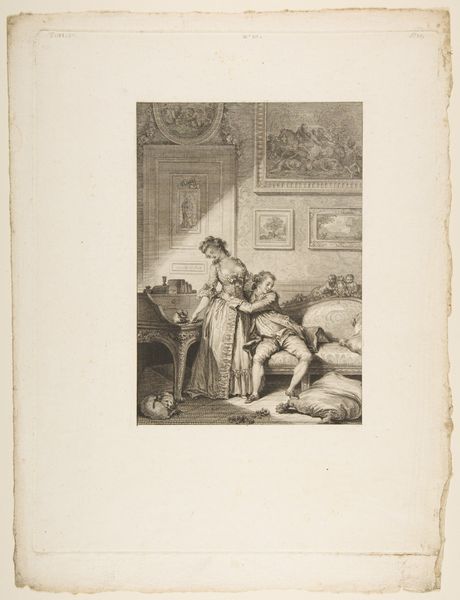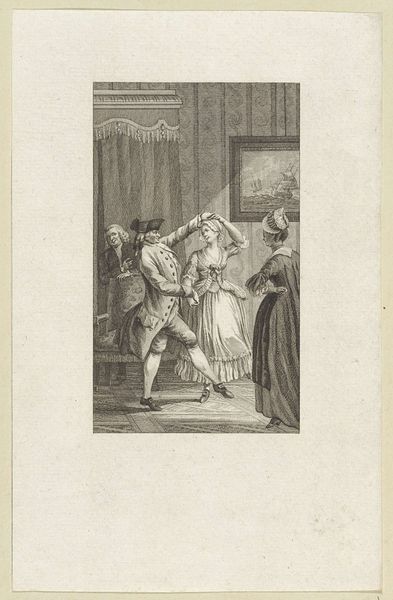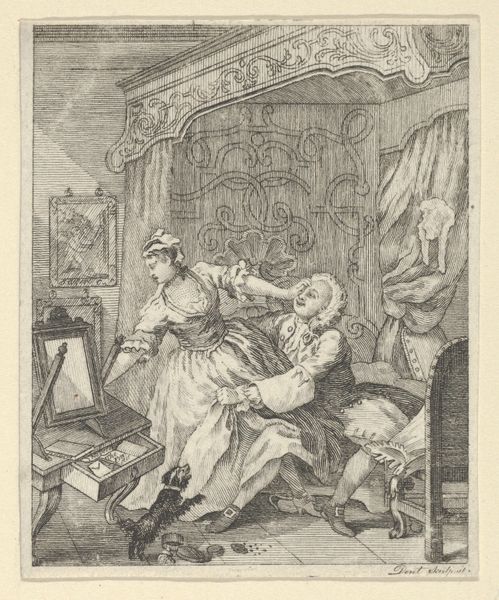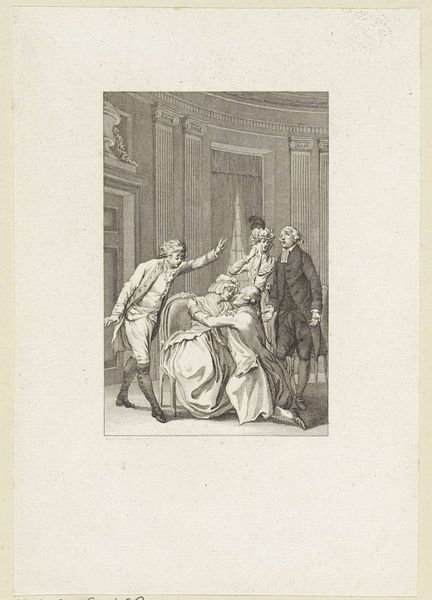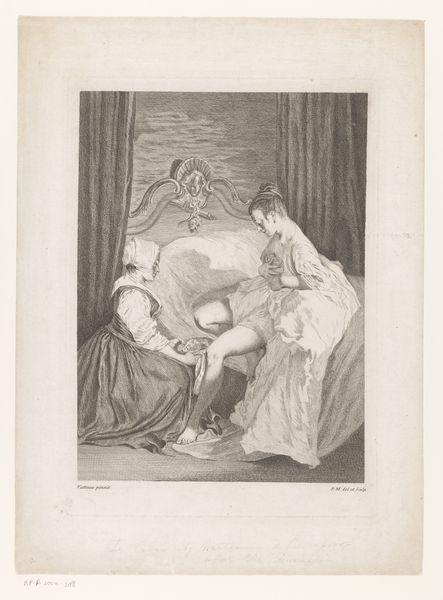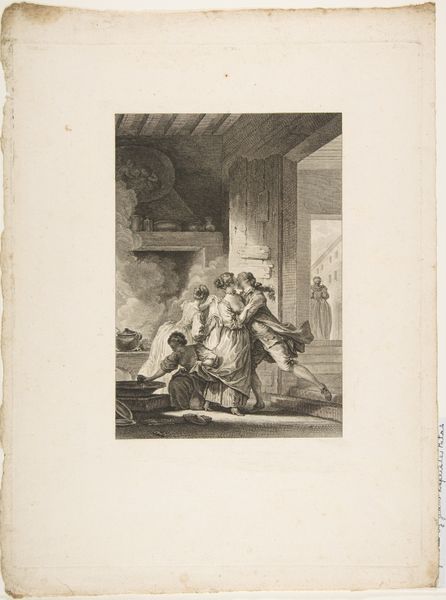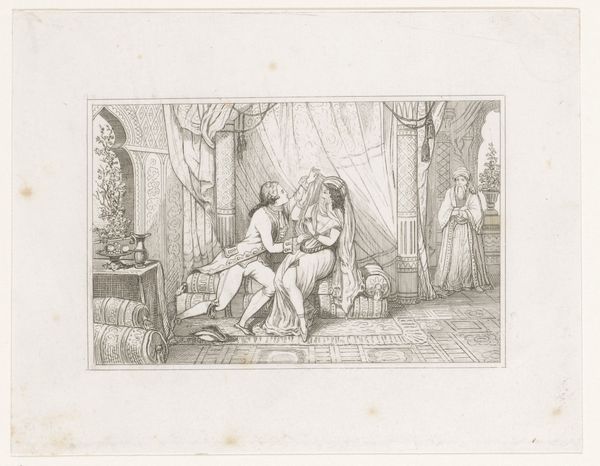
print, engraving
#
narrative-art
#
baroque
# print
#
genre-painting
#
engraving
Dimensions: 16 1/8 x 13 in. (40.96 x 33.02 cm) (sheet)
Copyright: Public Domain
Curator: Here we have "Before," an engraving by William Hogarth, created in 1736. It is part of a pair of works depicting a scene of courtship, residing here at the Minneapolis Institute of Art. What strikes you initially? Editor: Well, right off the bat, there’s a real tension in this scene, almost claustrophobic, with the heavy drapes and cluttered space. It's as if the air itself is charged with expectation… and maybe a little dread! Curator: Precisely! Hogarth’s masterful use of line creates a visual drama, almost a snapshot from a play. Notice the arrangement of figures and objects – how they lead the eye. The gaze is directed towards the couple but notice the dog to the side? Editor: Ah, yes! The dog almost acts as a moral observer, detached but keenly aware. Is he sniffing out a rat? Curator: Indeed. Details like the cherub painting above and scattered articles, also offer clues about Hogarth’s critique of manners and morals, using the framework of genre painting. What of the narrative impact, beyond technique? Editor: It feels like Hogarth is playing puppet master, pulling strings of satire with a wink and a smirk! The expressions are theatrical, exaggerated. We feel the anticipation and awkwardness. Curator: The artwork reflects his use of humor as a method for societal comment and his influence of narrative on art in England, an important perspective that departs from other artists. Hogarth also understood how best to convey complex stories using engravings and this work is definitely not an exception. Editor: Right! And that’s what's so interesting, this print makes us ask 'What's the real story? What happened right after?' Curator: Exactly! Hogarth leaves much to our imaginations. His skill lies not only in representation, but his ability to invoke questions. Editor: You know, it makes you wonder what other scandalous narratives hide behind tapestries, doesn’t it? A true glimpse of the naughty past, if I may say so.
Comments
minneapolisinstituteofart almost 2 years ago
⋮
Hogarth brings his usual insightful humor to the role reversals pictured in these two images (P.68.349 and P.68.350). In Before the woman appears anxious after having invited her enthusiastic lover into her bedroom. She futilely pushes him away amid the barks of her dog. The man clings to her body wildly, his face excited and his bald head becoming exposed under his wig-a sight that in the eighteenth century carried sexual overtones. In After, by contrast, the man appears panicked and distant, and the woman now passionately reaches to embrace his fleeing figure. As was typical, Hogarth peppered his scene with details to develop his narrative further. In After a number of objects are symbolically broken-the dressing table, chamber pot, and bed curtains-and the rocket ignited by the putto in the painting in the background has been extinguished.
Join the conversation
Join millions of artists and users on Artera today and experience the ultimate creative platform.
